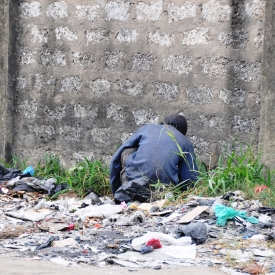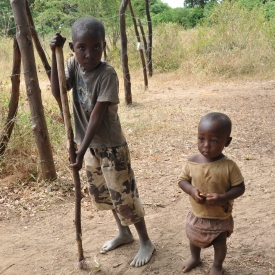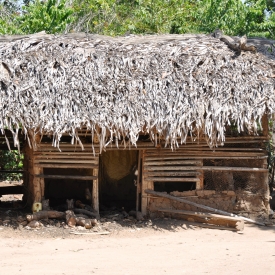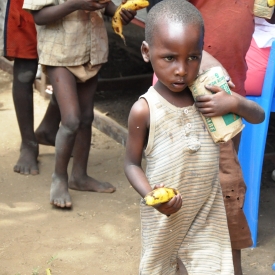Why build an Orphanage in Kenya?
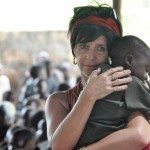 After witnessing first hand some of the horrors children live in Kenya, moving back to her life in Australia and doing nothing was never an option for Cathy. The images of hundreds and hundreds of emaciated children lined up to receive their only meal for the week haunted Cathy long after she returned to Australia.
After witnessing first hand some of the horrors children live in Kenya, moving back to her life in Australia and doing nothing was never an option for Cathy. The images of hundreds and hundreds of emaciated children lined up to receive their only meal for the week haunted Cathy long after she returned to Australia.
There are simply not enough orphanages to home the orphaned and vulnerable children, so their suffering continues. The need is beyond comprehension to those who have never seen how the orphaned children live. Cathy was determined to build her own orphanage.
The coastal province of Kwale is not the most desperate province in Kenya for orphans, but it has an enormous amount of tourists who come to visit Diana Beach and wish to donate to help the local community. This is the area where Cathy first volunteered and fell in love with.
When Cathy saw the difference that early intervention can make in the lives of vulnerable children without hope, she knew that her future would involve doing all she could to give children back their childhoods. Thank you to Footprints Orphanage in Shimba Hills and The Good Life Orphanage in the Kikimbala area of Kenya for giving us the inspiration to provide our own alternative to child abandonment.
The reality of living in poverty
On the road from north of Mombasa to the south of Ukunda, you see rotting garbage piled high randomly covering the sides of the unbelievable potholed roads. Poverty-stricken and orphaned children and adults use everything; very little of value actually makes it to the rubbish heaps. Only the foulest of food scraps and animal waste end up in these heaps. This is not a world where a child could find half-eaten Big Macs or left over KFC, unwanted apples, bread, or even vegetables. Eyeballs, entrails, and genitals of animals are eaten when need be to quell hunger. Whatever food is discarded is decaying, often maggot-infested mounds of waste and remains. Children sleep on dirt floors, with coconut husks as their only comfort from the hard ground.
Discarded children living on discarded scraps
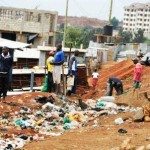 It is not unusual to see children, adults, dogs, goats, and cows altogether sifting through the layers of garbage in search of anything useful or edible. The children’s presence in this area is a small scale version for the thousands of street orphans of the coastal and other communities within Kenya – desperate souls simply trying to make it through the day.
It is not unusual to see children, adults, dogs, goats, and cows altogether sifting through the layers of garbage in search of anything useful or edible. The children’s presence in this area is a small scale version for the thousands of street orphans of the coastal and other communities within Kenya – desperate souls simply trying to make it through the day.
Kikambala Children’s Feeding Station is another heartbreaking experience as you see up to two and a half thousand children, barefoot and ragged, with hauntingly dead eyes, on some days (mostly orphaned) being fed by the Hindu Community each Sunday, after having walked up to 20km to get food. Each young child is often carrying a younger sibling on their backs as they wait patiently in line for a tray of beans and rice, so malnourished their hair is often falling out and their skin riddled with scabs, and their feet infested with jiggers (burrowing worms), and barely able to walk without pain. They eat what they can and take what is left for those who were to weak to make the journey.
